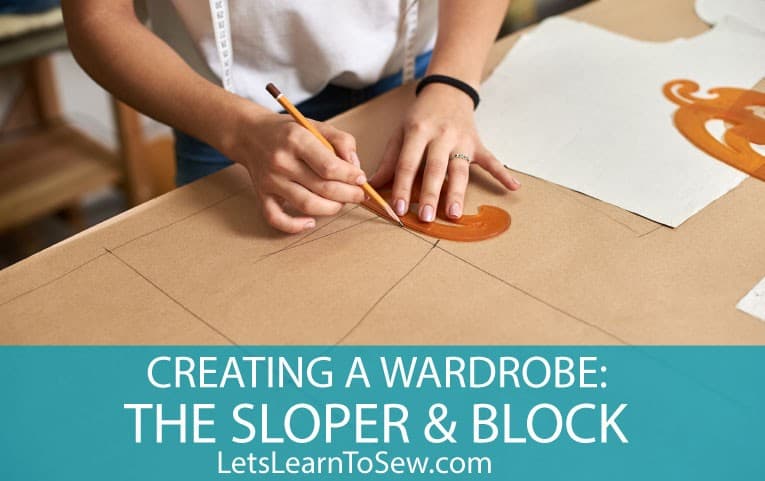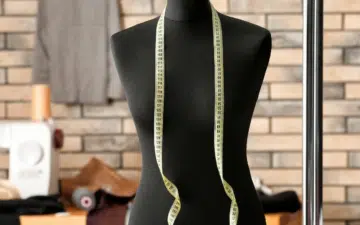PATTERNMAKING FUNDAMENTALS THE SLOPER & BLOCK
Before we get too deep into garment making I wanted to talk about some patternmaking fundamentals. You may have no desire to create your own patterns and that's 100% fine. I didn't want to for a long time. However, if you understand just a bit about patternmaking you can alter any commercial pattern into the perfect fit! Commercial pattern producers use slopers that fit the “average” or “ideal” body shape, which explains why we all have to do so much finagling to make a store-bought pattern fit just right.
THE SLOPER
A sloper is a basic pattern/template that is used as the building block for all other pattern making. Slopers are drafted based on specific body measurements and do not usually include a seam allowance, wearing ease, or any other design elements because they are not meant to be worn as a garment.
THE BLOCK
The terms ‘sloper’ and ‘block’ are often used interchangeably, but there is a difference. The block is drafted from the sloper and does include a bit of ease. Just like with the sloper the block does not include a seam allowance or hem.
WEARING EASE
Wearing ease is the additional space in a garment beyond the actual body measurements. Without ease, you would not be able to move without popping seams. It’s generally a small amount, just enough so a person can sit, bend or twist about. Wearing ease is usually added to three key areas- bust, waist, and hip
DESIGN EASE
Design ease is the amount of “room” put into a design by the designer. This ease is sometimes referred to as style ease or fashion ease. Again, it is added to three key areas as wearing ease. This design ease gives the garment its overall look or style. You can think of it in terms of a close-fitting t-shirt or a bagging one. A pencil skirt or a loose-fitting skirt.
This generic ease is also why many commercial patterns don't give us the fit we expect.
You can view the McCalls and Butterick ease chart on their website. Ease Chart
THE PERFECT FIT
Once you try on your sloper and perfect the fit, you’ll have a tangible record of what works on your body. You can then use the sloper to customize any pattern without needing to get out your tape measure and start from scratch. unless you have a major weight change, you only have to make a sloper once.
Now you can play around with your sloper to create your own simple clothing designs. Once you have a skirt sloper, for example, you can make a sewing pattern for a skirt, adding room for movement, seam allowances, pockets, and of course style.
You can also use your skills to adjust commercial patterns. When I'm short on time or happen to find the perfect design I will often buy a pattern and then use my patternmaking skills to tweak it for a custom fit





Leave a Reply